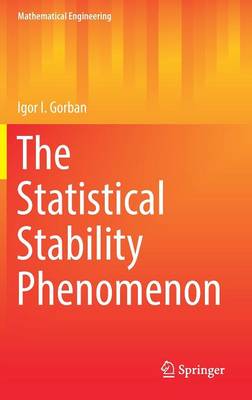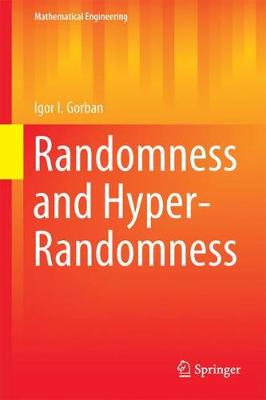Mathematical Engineering
2 total works
This monograph investigates violations of statistical stability of physical events, variables, and processes and develops a new physical-mathematical theory taking into consideration such violations – the theory of hyper-random phenomena. There are five parts. The first describes the phenomenon of statistical stability and its features, and develops methods for...
Read moreThis monograph investigates violations of statistical stability of physical events, variables, and processes and develops a new physical-mathematical theory taking into consideration such violations – the theory of hyper-random phenomena. There are five parts. The first describes the phenomenon of statistical stability and its features, and develops methods for detecting violations of statistical stability, in particular when data is limited. The second part presents several examples of real processes of different physical nature and demonstrates the violation of statistical stability over broad observation intervals. The third part outlines the mathematical foundations of the theory of hyper-random phenomena, while the fourth develops the foundations of the mathematical analysis of divergent and many-valued functions. The fifth part contains theoretical and experimental studies of statistical laws where there is violation of statistical stability.
The monograph should be of particular interest to engineers and scientists in general who study the phenomenon of statistical stability and use statistical methods for high-precision measurements, prediction, and signal processing over long observation intervals.
The monograph compares two approaches that describe the statistical stability phenomenon – one proposed by the probability theory that ignores violations of statistical stability and another proposed by the theory of hyper-random phenomena that takes these violations into account. There are five parts. The first describes the phenomenon of...
Read moreThe monograph compares two approaches that describe the statistical stability phenomenon – one proposed by the probability theory that ignores violations of statistical stability and another proposed by the theory of hyper-random phenomena that takes these violations into account. There are five parts. The first describes the phenomenon of statistical stability. The second outlines the mathematical foundations of probability theory. The third develops methods for detecting violations of statistical stability and presents the results of experimental research on actual processes of different physical nature that demonstrate the violations of statistical stability over broad observation intervals. The fourth part outlines the mathematical foundations of the theory of hyper-random phenomena. The fifth part discusses the problem of how to provide an adequate description of the world.
The monograph should be interest to a wide readership: from university students on a first course majoring in physics, engineering, and mathematics to engineers, post-graduate students, and scientists carrying out research on the statistical laws of natural physical phenomena, developing and using statistical methods for high-precision measurement, prediction, and signal processing over broad observation intervals.
To read the book, it is sufficient to be familiar with a standard first university course on mathematics.


